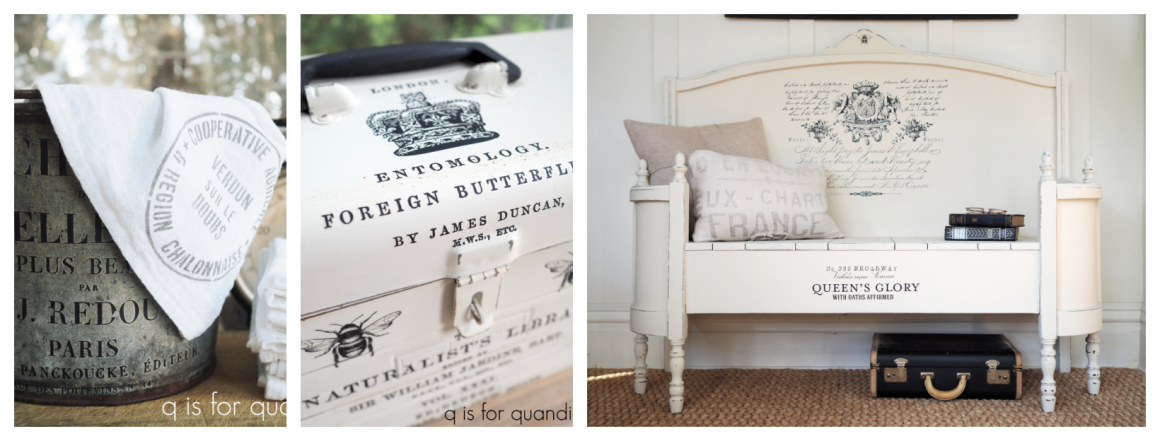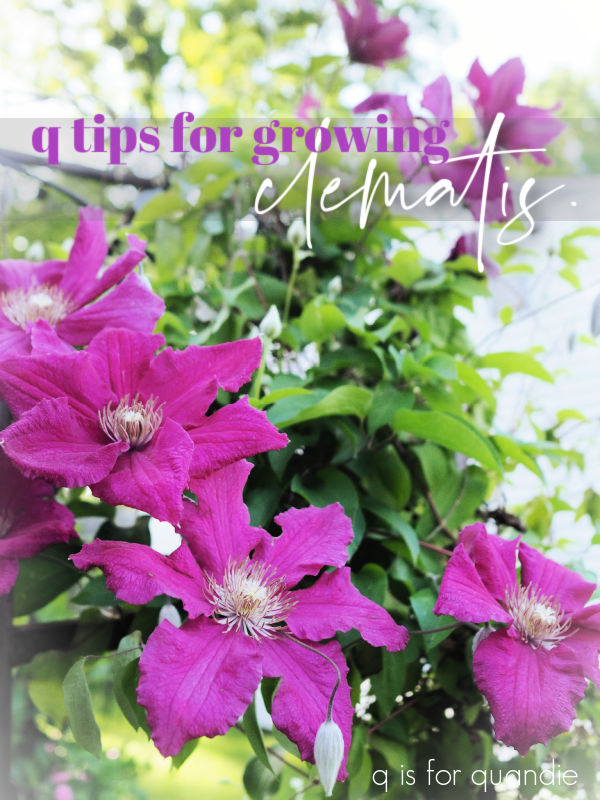Good morning from the garden.
Last week I shared some photos of my three earliest blooming clematis, which are doing incredibly well this year.

Especially that one. Wait, let me back up the camera a minute and show you the entire plant …

See what I mean? It is spectacular.
Last year it was a bit of a bust, with only a few flowers at the top …
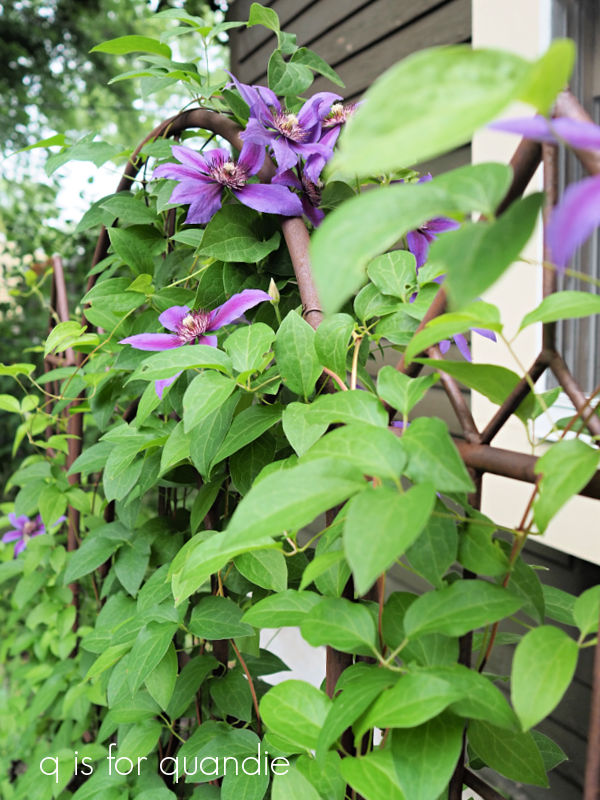
So its performance this year is quite a lot better.
This particular plant is well over three years old, so it’s not just that it finally came into its own. There have to be other factors at play.
So I’ve been taking note of what I did differently this year (so that I can do it again next year), and there were a couple of things.
First, and probably most significantly, I fertilized my clematis in early spring. I’d never done that before. I used the Espoma Plant-tone which is an organic all-purpose 5-3-3 fertilizer. That’s not precisely the formula recommended for clematis, but it was what I had on hand and I figured something was better than nothing. To apply I simply sprinkled about 1 cup of Plant-tone around the base of each clematis.
I was also more diligent about helping the clematis climb the trellis this year. As it was emerging and growing in the spring, I went out every few days and tied stems to the trellis.
According to several sources, the growing end of a clematis vine will stop growing if it can’t find anything to grab onto. In previous years I left a lot of this plant sprawled into the garden rather than guiding it up to the trellis. Although, as you can see in that last photo, it still reached the top of the trellis, it just didn’t have many flowers.
So I’m not sure I can attribute its remarkable performance this year to helping it climb. As an example, here is a clematis in my neighbor Arlene’s garden …
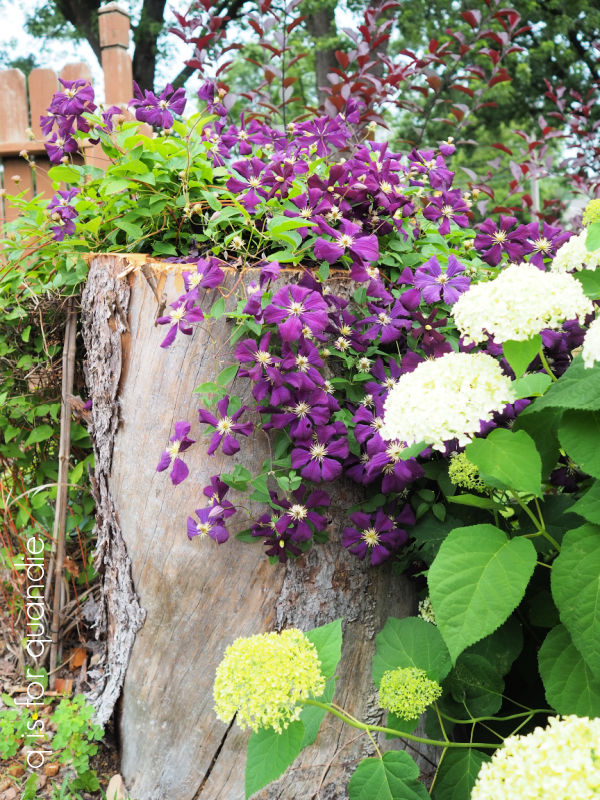
She doesn’t help that one climb at all, it just scrambles over that stump. And yet, it’s still covered in blooms.
There may some other variables at play when it comes to blooms. For example, we had a really mild winter and so far lots of rain this spring.
Also, I suspect due to the mild winter, the rabbits must have had plenty to eat because they didn’t nibble on my clematis like they did the prior winter. That year they systematically chewed through all of my clematis at about maximum rabbit height (a foot or so from the ground).
And that brings me to the subject of pruning. If you start going down that rabbit hole (pardon the pun) online you’ll find all kinds of info on the different clematis pruning groups. And if you aren’t sure what clematis you have, or what pruning group it belongs to, you are totally lost. After a while your head will be swimming. Or mine was anyway.
But then I found The Frozen North Pruning System from humingbirdfarm.net. One caveat here, this system is recommended for northern gardeners specifically. Those of you in the south may not have success with this method. But here in my Minnesota, now zone 5a, formerly zone 4b, garden I should be OK with this pruning method.
They’ve simplified clematis pruning into two groups; Don’t Bother and Full Prune.
It’s easy to tell which group your clematis belongs to by its bloom time. Those that bloom in May or early June (the three I have blooming now), are in the Don’t Bother group. You can prune out the winter kill once you see live buds on your stems, but otherwise don’t bother pruning at all.

All other clematis that start blooming in late June or later , like my Roguchi, are in the Full Prune group.
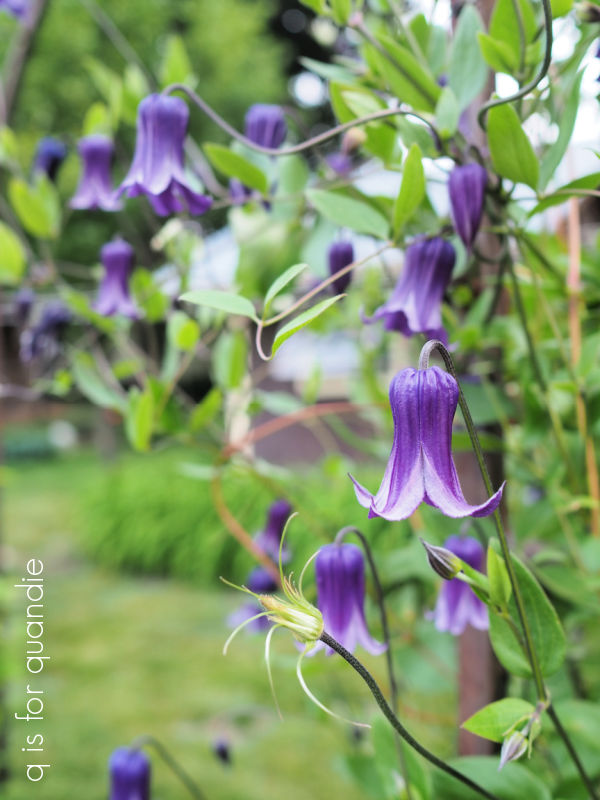
That photo of the Roguchi is from last year, it does not have any flowers open yet this year.
Jackmanii, a very popular hybrid clematis, is also one that belongs to the Full Prune group (pictured blooming last year below).
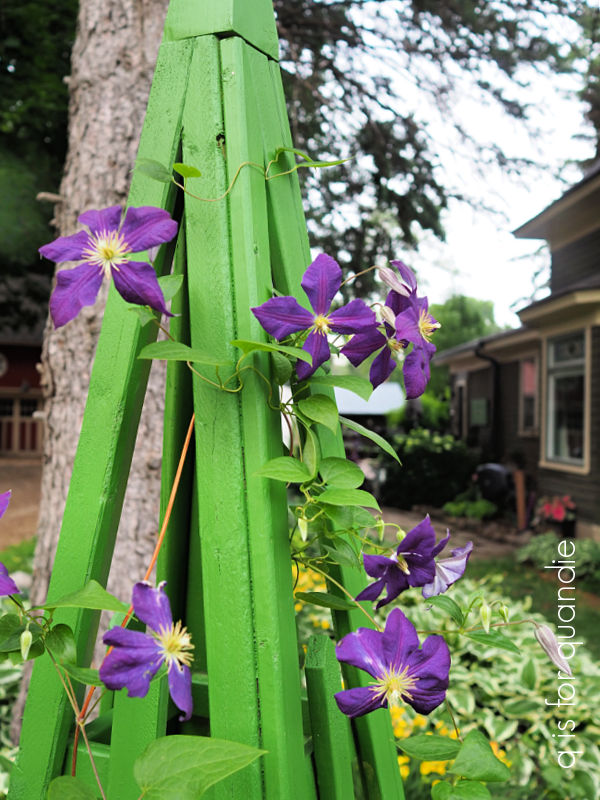
For the Full Prune group, simply give them a hard prune by cutting them off about a foot from the ground in late winter or early spring.
In other words, the winter before last the rabbits gave all of my clematis a Full Prune without regard to which group they were in. That may be why my Don’t Bother group didn’t have nearly as many blooms last year.

Which brings me to the final bit of advice from Hummingbird Farm, no one has ever killed a clematis by making a pruning mistake (including rabbits). So don’t get too wound up about whether or not to prune your clematis. Just pay attention to bloom times this summer, and then act accordingly next spring when it’s time to start pruning. And while you’re at it, give them a little fertilizer in the spring as well.
Do you have any clematis in your garden? Do you fertilize, or follow the pruning ‘rules’? Leave a comment and let me know.

